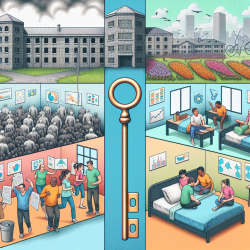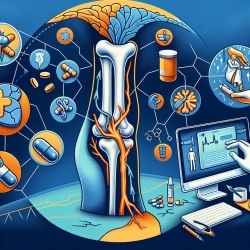Introduction
In the realm of adolescent mental health, early identification of anxiety and depressive disorders is crucial. According to the research article titled "Using the 11-item Version of the RCADS to Identify Anxiety and Depressive Disorders in Adolescents," a streamlined version of the Revised Children's Anxiety and Depression Scale (RCADS) has been developed to address this need. This blog explores how practitioners can leverage these findings to enhance their screening processes and outcomes.
Understanding the RCADS-11
The study aimed to refine the RCADS into a concise 11-item questionnaire that maintains the reliability and validity of its longer predecessors. This brief version comprises six items related to anxiety and five to depression, achieving sensitivity and specificity values greater than 0.75. Such efficiency is crucial in school and primary care settings where time constraints often limit the use of longer assessments.
Implications for Practitioners
Practitioners can implement the RCADS-11 to efficiently screen adolescents for anxiety and depressive disorders. The study found that combining adolescent and parent reports improves the identification accuracy compared to adolescent reports alone. This dual-report approach acknowledges the diverse contexts in which symptoms may manifest, such as at home or school.
Enhancing Screening Accuracy
The research also examined the impact of adding items related to symptom impact and duration, as well as suicidal ideation. While the latter did not significantly enhance the screening accuracy, the inclusion of symptom impact items did. Practitioners are encouraged to incorporate these additional questions to further refine their assessments.
Practical Application in Schools
Schools are pivotal in the early detection of mental health issues. The RCADS-11 offers a practical tool for educators and school psychologists to identify students in need of further support. By integrating this tool into routine screenings, schools can better allocate resources and interventions to those who need them most.
Encouraging Further Research
While the RCADS-11 shows promise, ongoing research is essential to validate its effectiveness across diverse populations and settings. Practitioners are encouraged to contribute to this body of knowledge by sharing their experiences and outcomes using the RCADS-11 in various contexts.
Conclusion
The RCADS-11 represents a significant advancement in the screening of anxiety and depressive disorders in adolescents. By adopting this tool, practitioners can make data-driven decisions that enhance the mental health outcomes of young people. For those interested in delving deeper into the research, the original paper provides a comprehensive overview of the study's methodology and findings.
To read the original research paper, please follow this link: Using the 11-item Version of the RCADS to Identify Anxiety and Depressive Disorders in Adolescents.










